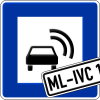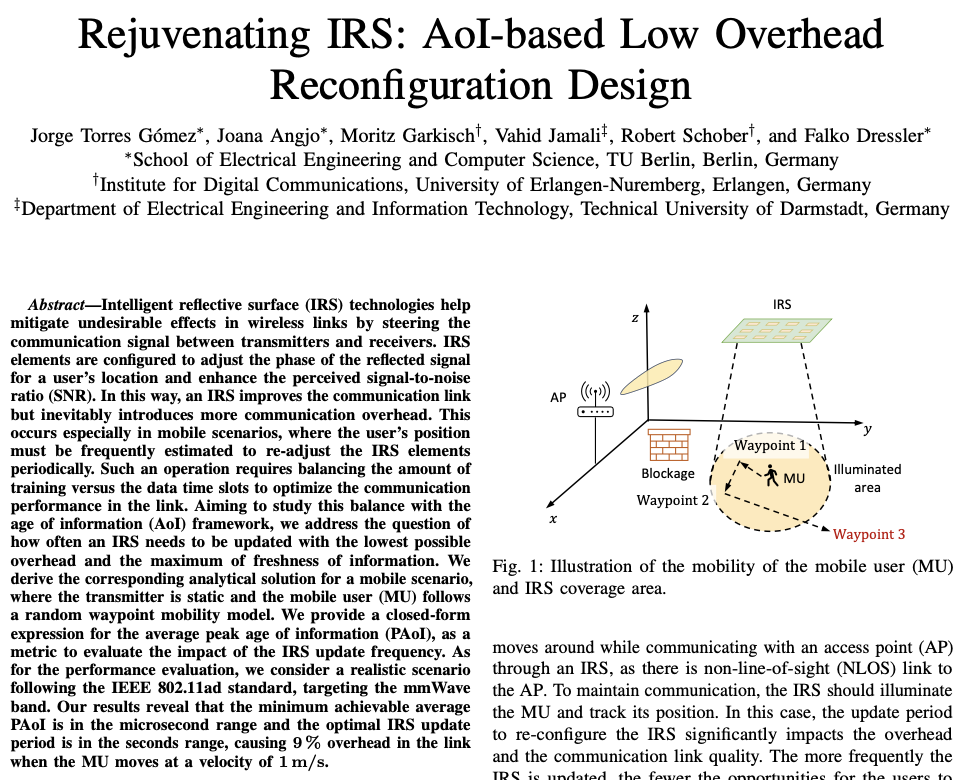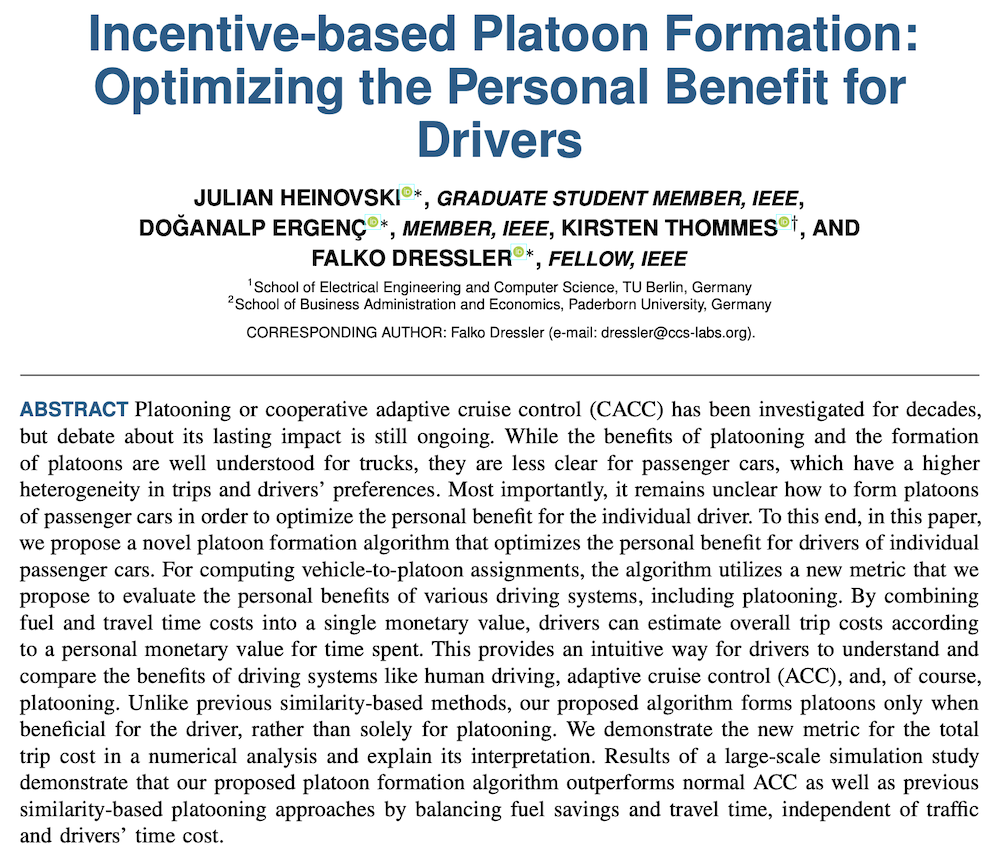ML-IVC - Multi-Layer Inter-Vehicle Communication


Institution
- Computer and Communication Systems, University of Innsbruck
Team
- Univ.-Prof. Dr.-Ing. Falko Dressler (coordination)
- Dr.-Ing. Christoph Sommer (coordination)
- Stefan Joerer
- Michele Segata
- Dr. Florian Klingler
Funding
- internal CCS project
Project Time
- 01.09.2011 - 31.03.2014
Description
The information exchange among vehicles on our streets is becoming a key building block for a variety of applications ranging from safety critical warning systems to information systems and even entertainment applications. Besides the use of cellular networks, short range broadcast is an extremely efficient way for inter-vehicle communication. In this project we investigate several aspects of such IVC approaches:
- Beacon-based information exchange - periodic beacon messages build the basis for so-called cooperative awareness of driving vehicles. It has been shown that the periodicity of such beacons strongly depends on several factors including the vehicles' density, possible obstacles blocking the radio communication, and the importance of messages to be transmitted. Based on our ATB (Adaptive Beacon Protocol) concept, we investigate adaptive and self-organizing options for improving the beacon efficiency with a strong focus on safety related applications.
- Distributed information management - besides the direct exchange of information between vehicles, the use of infrastructure elements strongly improves the efficiency of information management in a massively distributed system such as a vehicular network. We exploit both the use of road side units as well as the use of parked vehicles to optimize the communication efficiency. Dynamically grouping vehicles allows to share information between this group and passing vehicles. We see special advantages of using parked vehicles as a distributed information storage as well as to bridge communication gaps in safety critical applications.
- Simulation techniques and field tests - performance evaluation of IVC solutions typically depends on extensive simulation experiments. We continuously extend our Veins simulation toolkit that integrates network simulation and road traffic micro simulation. In particular, we are developing very realistic radio attenuation and shadowing models based on empirical observations from field tests and experimental measurements. These models are fully based on the standard DSRC/WAVE protocol suite.
Selected Publications
2014
Journals and Magazines
 Christoph Sommer, David Eckhoff and Falko Dressler, "IVC in Cities: Signal Attenuation by Buildings and How Parked Cars Can Improve the Situation," IEEE Transactions on Mobile Computing, vol. 13 (8), pp. 1733–1745, August 2014.
[DOI, BibTeX, PDF, More details]
Christoph Sommer, David Eckhoff and Falko Dressler, "IVC in Cities: Signal Attenuation by Buildings and How Parked Cars Can Improve the Situation," IEEE Transactions on Mobile Computing, vol. 13 (8), pp. 1733–1745, August 2014.
[DOI, BibTeX, PDF, More details]
Conferences and Workshops
 Felix Erlacher, Florian Klingler, Christoph Sommer and Falko Dressler, "On the Impact of Street Width on 5.9 GHz Radio Signal Propagation in Vehicular Networks," Proceedings of 11th IEEE/IFIP Conference on Wireless On demand Network Systems and Services (WONS 2014), Obergurgl, Austria, April 2014, pp. 143–146.
[DOI, BibTeX, PDF, More details]
Felix Erlacher, Florian Klingler, Christoph Sommer and Falko Dressler, "On the Impact of Street Width on 5.9 GHz Radio Signal Propagation in Vehicular Networks," Proceedings of 11th IEEE/IFIP Conference on Wireless On demand Network Systems and Services (WONS 2014), Obergurgl, Austria, April 2014, pp. 143–146.
[DOI, BibTeX, PDF, More details]
2013
Conferences and Workshops
 Michele Segata, Bastian Bloessl, Stefan Joerer, Christoph Sommer, Renato Lo Cigno and Falko Dressler, "Vehicle Shadowing Distribution Depends on Vehicle Type: Results of an Experimental Study," Proceedings of 5th IEEE Vehicular Networking Conference (VNC 2013), Boston, MA, December 2013, pp. 242–245.
[DOI, BibTeX, PDF, More details]
Michele Segata, Bastian Bloessl, Stefan Joerer, Christoph Sommer, Renato Lo Cigno and Falko Dressler, "Vehicle Shadowing Distribution Depends on Vehicle Type: Results of an Experimental Study," Proceedings of 5th IEEE Vehicular Networking Conference (VNC 2013), Boston, MA, December 2013, pp. 242–245.
[DOI, BibTeX, PDF, More details] Christoph Sommer, Stefan Joerer, Michele Segata, Ozan K. Tonguz, Renato Lo Cigno and Falko Dressler, "How Shadowing Hurts Vehicular Communications and How Dynamic Beaconing Can Help," Proceedings of 32nd IEEE Conference on Computer Communications (INFOCOM 2013), Mini-Conference, Turin, Italy, April 2013, pp. 110–114.
[DOI, BibTeX, PDF, More details]
Christoph Sommer, Stefan Joerer, Michele Segata, Ozan K. Tonguz, Renato Lo Cigno and Falko Dressler, "How Shadowing Hurts Vehicular Communications and How Dynamic Beaconing Can Help," Proceedings of 32nd IEEE Conference on Computer Communications (INFOCOM 2013), Mini-Conference, Turin, Italy, April 2013, pp. 110–114.
[DOI, BibTeX, PDF, More details] Florian Klingler, Falko Dressler, Jiannong Cao and Christoph Sommer, "Use Both Lanes: Multi-Channel Beaconing for Message Dissemination in Vehicular Networks," Proceedings of 10th IEEE/IFIP Conference on Wireless On demand Network Systems and Services (WONS 2013), Banff, Canada, March 2013, pp. 162–169.
[DOI, BibTeX, PDF, More details]
Florian Klingler, Falko Dressler, Jiannong Cao and Christoph Sommer, "Use Both Lanes: Multi-Channel Beaconing for Message Dissemination in Vehicular Networks," Proceedings of 10th IEEE/IFIP Conference on Wireless On demand Network Systems and Services (WONS 2013), Banff, Canada, March 2013, pp. 162–169.
[DOI, BibTeX, PDF, More details]
2012
Journals and Magazines
 Stefan Joerer, Christoph Sommer and Falko Dressler, "Toward Reproducibility and Comparability of IVC Simulation Studies: A Literature Survey," IEEE Communications Magazine, vol. 50 (10), pp. 82–88, October 2012.
[DOI, BibTeX, PDF, More details]
Stefan Joerer, Christoph Sommer and Falko Dressler, "Toward Reproducibility and Comparability of IVC Simulation Studies: A Literature Survey," IEEE Communications Magazine, vol. 50 (10), pp. 82–88, October 2012.
[DOI, BibTeX, PDF, More details]
Conferences and Workshops
 Christoph Sommer, Stefan Joerer and Falko Dressler, "On the Applicability of Two-Ray Path Loss Models for Vehicular Network Simulation," Proceedings of 4th IEEE Vehicular Networking Conference (VNC 2012), Seoul, South Korea, November 2012, pp. 64–69.
[DOI, BibTeX, PDF, More details]
Christoph Sommer, Stefan Joerer and Falko Dressler, "On the Applicability of Two-Ray Path Loss Models for Vehicular Network Simulation," Proceedings of 4th IEEE Vehicular Networking Conference (VNC 2012), Seoul, South Korea, November 2012, pp. 64–69.
[DOI, BibTeX, PDF, More details] Stefan Joerer, Michele Segata, Bastian Bloessl, Renato Lo Cigno, Christoph Sommer and Falko Dressler, "To Crash or Not to Crash: Estimating its Likelihood and Potentials of Beacon-based IVC Systems," Proceedings of 4th IEEE Vehicular Networking Conference (VNC 2012), Seoul, South Korea, November 2012, pp. 25–32.
[DOI, BibTeX, PDF, More details]
Stefan Joerer, Michele Segata, Bastian Bloessl, Renato Lo Cigno, Christoph Sommer and Falko Dressler, "To Crash or Not to Crash: Estimating its Likelihood and Potentials of Beacon-based IVC Systems," Proceedings of 4th IEEE Vehicular Networking Conference (VNC 2012), Seoul, South Korea, November 2012, pp. 25–32.
[DOI, BibTeX, PDF, More details] Stefan Joerer, Falko Dressler and Christoph Sommer, "Comparing Apples and Oranges? Trends in IVC Simulations," Proceedings of 9th ACM International Workshop on Vehicular Internetworking (VANET 2012), Low Wood Bay, United Kingdom, June 2012, pp. 27–32.
[DOI, BibTeX, PDF, More details]
Stefan Joerer, Falko Dressler and Christoph Sommer, "Comparing Apples and Oranges? Trends in IVC Simulations," Proceedings of 9th ACM International Workshop on Vehicular Internetworking (VANET 2012), Low Wood Bay, United Kingdom, June 2012, pp. 27–32.
[DOI, BibTeX, PDF, More details]
2011
Journals and Magazines
 Falko Dressler, Christoph Sommer, David Eckhoff and Ozan K. Tonguz, "Towards Realistic Simulation of Inter-Vehicle Communication: Models, Techniques and Pitfalls," IEEE Vehicular Technology Magazine, vol. 6 (3), pp. 43–51, September 2011.
[DOI, BibTeX, PDF, More details]
Falko Dressler, Christoph Sommer, David Eckhoff and Ozan K. Tonguz, "Towards Realistic Simulation of Inter-Vehicle Communication: Models, Techniques and Pitfalls," IEEE Vehicular Technology Magazine, vol. 6 (3), pp. 43–51, September 2011.
[DOI, BibTeX, PDF, More details] Christoph Sommer, Ozan K. Tonguz and Falko Dressler, "Traffic Information Systems: Efficient Message Dissemination via Adaptive Beaconing," IEEE Communications Magazine, vol. 49 (5), pp. 173–179, May 2011.
[DOI, BibTeX, PDF, More details]
Christoph Sommer, Ozan K. Tonguz and Falko Dressler, "Traffic Information Systems: Efficient Message Dissemination via Adaptive Beaconing," IEEE Communications Magazine, vol. 49 (5), pp. 173–179, May 2011.
[DOI, BibTeX, PDF, More details]
Conferences and Workshops
 Christoph Sommer and Falko Dressler, "Using the Right Two-Ray Model? A Measurement based Evaluation of PHY Models in VANETs," Proceedings of 17th ACM International Conference on Mobile Computing and Networking (MobiCom 2011), Poster Session, Las Vegas, NV, September 2011.
[BibTeX, PDF, More details]
Christoph Sommer and Falko Dressler, "Using the Right Two-Ray Model? A Measurement based Evaluation of PHY Models in VANETs," Proceedings of 17th ACM International Conference on Mobile Computing and Networking (MobiCom 2011), Poster Session, Las Vegas, NV, September 2011.
[BibTeX, PDF, More details]







